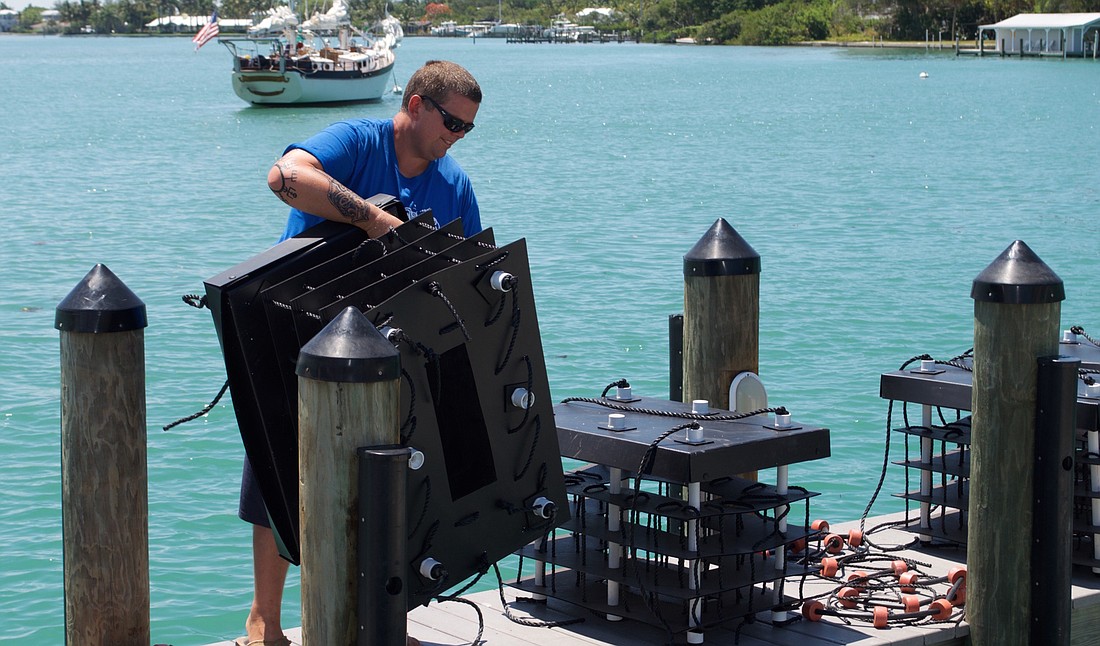- January 15, 2025
-
-
Loading

Loading

Siesta Key residents are starting an effort to clean out Grand Canal, which, since its opening in 1925, has faced murky waters, fish kills and sewage spills.
Members of the Siesta Key Association began a pilot program that asks homeowners who live along the canal to install mini reefs under their docks to help attract marine life that would naturally filter and add oxygen to the water.
The Grand Canal covers 89 acres over 9 miles, and members of SKA hope to eventually have reefs installed throughout. For now, though, they are focusing efforts near the opening of the canal in Siesta Key Circle.
The project consists of 21 homeowners who have agreed to install mini reefs below their docks. The goal is to eventually have 80 locations in the project.
The reefs are 3 feet wide, 2 feet deep and 2 feet tall with four shelves to passively attract sea life, with the idea to provide similar marine-life benefits to mangroves.
Once it’s fully established, each mini reef can support around 300 fish and 200 crabs per year.
In a video prepared for the launch of the project, Lorraine Stanford, a Grand Canal resident who already has a mini reef installed, said in the two years she’s had the reef, she’s noticed a large increase in nearby fish life, particularly smaller fish.
“That’s what I think is going to help grow the rest of the water — because when we get the smaller fish, it’s like a nursery for them,” Stanford said. “It’s a place for them to grow up and become the big fish that go out into the ocean, and then someone can catch them.”
Project leaders Jean Cannon and Phil Chiocchio said they would like to see more reefs installed toward Palm Island, which is where the canal dead ends.
They plan to place some along Avenida Del Norte, Avenida Del Mare and Avenida Madera, near Morton’s Siesta Market.
“Those areas will really show us what kind of impact we can have because they’re not close to the opening to the canal at all,” Cannon said.
The canal has only one opening, so there is low water flow, which creates high turbidity in the canal’s water. The addition of sponges and oysters attracted by the reefs, Chiocchio said, will help lower the turbidity, giving the canal clearer water.
Chiocchio said SKA members will monitor water samples, though he warned that it might take some time before substantial results are seen.
“A bulldozer only takes a day to ruin things, but nature takes longer to build back up,” Chiocchio said. “So this is something we’re going to have to spend some time on.”
Chiocchio said he would like to have clearer waters as a result of the project in time for the canal’s 100th anniversary in 2025.
Those interested in joining the pilot can contact organizers at [email protected].